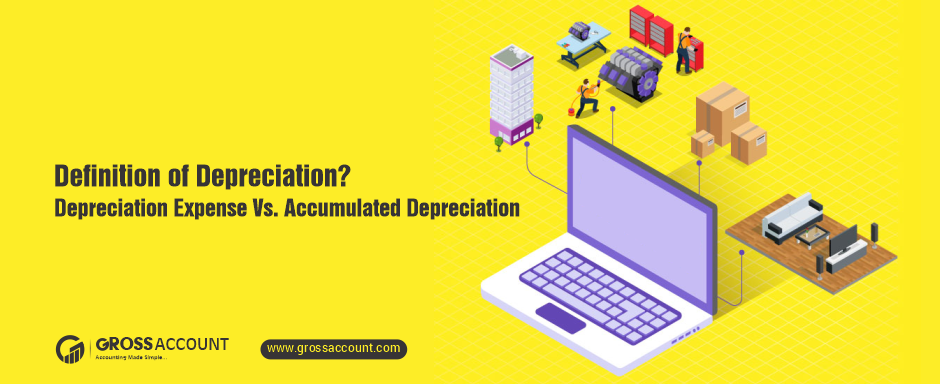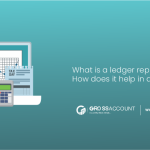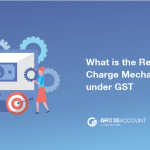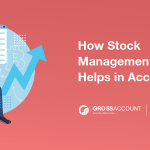What is Depreciation?
Depreciation is an accounting method for calculating the amount of a tangible or physical asset over its usable life or expected life.
Companies have to maintain their assets to maintain their financial positions. Even while maintaining the proper accounts the companies can increase their revenues in the competitive market. Depreciating assets allows businesses to generate revenue while reducing a percentage of the asset’s cost each year.
Well, Normally the accountant refers to the depreciation in the two aspects,
1. Decrease the values of an original asset value
2. Allocating the original cost in the accounting statement
Even calculating the depreciation is the long-term asset for both accounting and paying the taxes. Depreciation methods and periods may differ between asset types within the same business, and they may change for tax purposes. Calculating and maintaining the assets of the companies are essential. Through the help of accounting software, companies can easily manage their balance sheet and get error-free results.
Types of Depreciation
There are several methods to compute the depreciation for the businesses.
1. Straight-Line
The accountant calculates the markdown using the straight-line method and this is the most basic way to record the depreciation. This records the same amount of reduction expense each year for the term of the asset’s useful life until the asset is reduced to its recoverable amount.
For Example,
A corporation purchases a machine for Rs.5000. The corporation chooses a salvage value of Rs.1000 and a five-year usable life. The depreciation method amount is Rs.4000 based on these assumptions (Rs.5000 cost – Rs.1000 salvage value).
Companies now calculate annual markdown by dividing the depreciable amount by the total number of years using the straight-line method. It works out to Rs.800 each year (Rs.4000 / 5) in this example. This leads to a 20 % cash flow (Rs.800 / Rs.4000).
2. Declining Balance
The decreasing balance method is a depreciation method that increases the rate of depreciation. This method declines the machine each year by scaling the straight-line depreciation percentage by the remaining carrying value. Because an asset’s carrying value is larger in the early years, the same percentage results in a higher reduction expense in the early years, which decreases with each passing year.
While continuing with the above example, The machine costs Rs. 5000, has a salvage value of Rs. 1000, a five-year life, and is depreciated at 20% yearly, meaning the first year’s expense is Rs. 800 (Rs. 4,000 depreciable amount x 20%), the second year’s expense is Rs. 640 (Rs. (4,000 – Rs. 800) x 20%), etc.
3. Double Declining Balance (DDB)
A fast markdown method is a double-declining balance (DDB). This rate is applied to the depreciable base, book value, for the balance of the assets currently estimated after doubling the ratio of the asset’s useful life.
For example, A five-year-old asset has a reciprocal value of 1/5 or 20%. For depreciation, the asset’s current book value is multiplied by twice the rate or 40%. Because the rate is multiplied by a smaller depreciable base for each period, the dollar value will decrease with time, even while the rate remains constant.
4. Sum-of-the-Year’s-Digits (SYD)
Accelerated depreciation is also possible with the sum-of-the-year’s-digits (SYD) approach. To begin, add all of the asset’s usable life values together.
For example, the calculation of an asset with a four-year life would have a base of 1+ 2 + 3 + 4 = 10. 4/10 of the salvage value base would be reduced in the first year. Only 3/10 of the depreciable base would be reduced the second year. This process continues until the final 1/10 of the base is reduced in year four.
5. Units of Production
This method requires a forecast of how many total units an asset will create throughout its useful life. The annual reduction expense is then computed depending on the number of units manufactured. Depreciation expenses are also calculated using this method depending on the depreciable amount.
Recommended for you: HOW TO CHOOSE THE RIGHT ACCOUNTING SOFTWARE FOR YOUR BUSINESS?
Example of Depreciation
If a company ‘ABC’ purchases a piece of equipment for Rs.50,000, it can either expense the entire cost in the first year or write off the asset’s value during the asset’s 10-year useful life. This is why the owners of the ‘ABC’ company appreciate decline. The majority of business owners choose to simply expense a portion of the cost, which increases net income.
At the end of its useful life, Company ‘ABC’ can salvage the equipment for Rs.10,000, indicating that it has a salvage value of Rs.10,000. Using these variables, downturn expense is determined as the difference between the asset’s cost and salvage value, divided by the asset’s useful life. (Rs.50,000 – Rs.10,000) / 10 is the calculation in this case. Depreciation costs amount to Rs.4,000 each year.
As a result, even though ‘ABC’ handed out the money in cash, the company’s accountant does not have to expense the entire Rs. 50,000 in the first year. Instead, the company will simply have to deduct Rs. 4,000 from its net profit. The company spends Rs. 4,000 the following year, Rs. 4,000 the year after that, and so on until the asset’s restoration value of Rs. 10,000 is reached in ten years.
What is the Depreciation Expense?
Now after getting the understanding of the Depreciation, the companies are aware of the downturn expenses to manage the errorless balance sheet.
The depreciation expenses are normal expenses of the companies. The portion of a fixed asset that has been considered utilized in the current period is depreciation expense. This amount is then debited to the expenses account. This charge is intended to gradually reduce the carrying amount of fixed assets as their value depreciates over time. This is a non-cash expense, meaning there is no cash outflow linked with this.
For Example, Factory units that manufacture a fabric company’s primary product have associated revenues and costs. The corporation uses an asset life and scrap value to calculate associated decline.
Depreciation costs for a machine for Rs.500,000 that is estimated to be worth Rs.100,000 in five years are Rs.80,000 per year((Rs. 500,000 – Rs. 100,000) / 5 = Rs. 80,000). Investors should be aware of overblown life spans and scrap prices because there are no rules for calculating scrap value and life expectancy.
What is the Accumulated Depreciation?
Accumulated Depreciation is the amount of depreciation expense allotted to a specific asset since the asset was used for any business. When a business records depreciation expenses, the same amount is credited to the accumulated depreciation account, allowing the business to demonstrate the asset’s total cost, including depreciation. The overall market value of the asset is also shown on the balance sheet.
The matching principle requires expenses to be assigned to the same accounting period as the relevant revenue, as per Generally Accepted Accounting Principles (GAAP).
For example, during year three of ownership, the machine that costs Rs. 500,000 is worth Rs. 300,000. Again, investors should keep a constant look on management to ensure that decline-calculating strategies aren’t being used to boost book value behind the scenes. However, this strategy is frequently used to decrease assets beyond their market worth.
This is done for a variety of reasons, the two most essential of which are that the organization can claim more decline deductions on its taxes and that the margin between revenue and liabilities is extended. This gives the impression that the company is more profitable than it genuinely appears.
Depreciation Expense VS Accumulated Depreciation
For getting accurate results, the companies need to calculate the depreciation expense and accumulated depreciation. Here are some differences between the Depreciation Expense and Accumulated Depreciation.
Recorded
-
Depreciation Expense is recorded on the income statement of the companies.
-
Accumulated Depreciation is recorded on the balance sheet of the organizations.
Debit & Credit
-
The Depreciation Expense account balance is a debit for the companies.
-
The Accumulated Depreciation account balance is a credit for the companies.
Associated
-
Within the income statement, depreciation expense is a separate and independent association.
-
On the balance sheet, accumulated depreciation is associated with and offsets the fixed assets line products.
Asset is sold
-
When an asset is sold, the depreciation expense comes to a stop.
-
When an asset is sold, the accumulated depreciation is reversed.
Also Read: 7 PROVEN WAYS TO INCREASE THE PROFIT MARGIN FOR YOUR BUSINESS
Conclusion
Although all of these depreciation entries should appear on year-end and quarterly reports, decline cost is the more typical of the two due to its use in tax deductions and capacity to reduce a company’s tax burden.
Annual reduction expense on the income statement is usually easier to find than accumulated depreciation on the balance sheet for any company. Although accumulated depreciation can be useful in determining the age of a company’s asset base, it is usually presented accurately on financial statements. Through the help of Accounting Software companies can easily calculate the decline.
Are you looking for Accounting Software then Contact Us.






